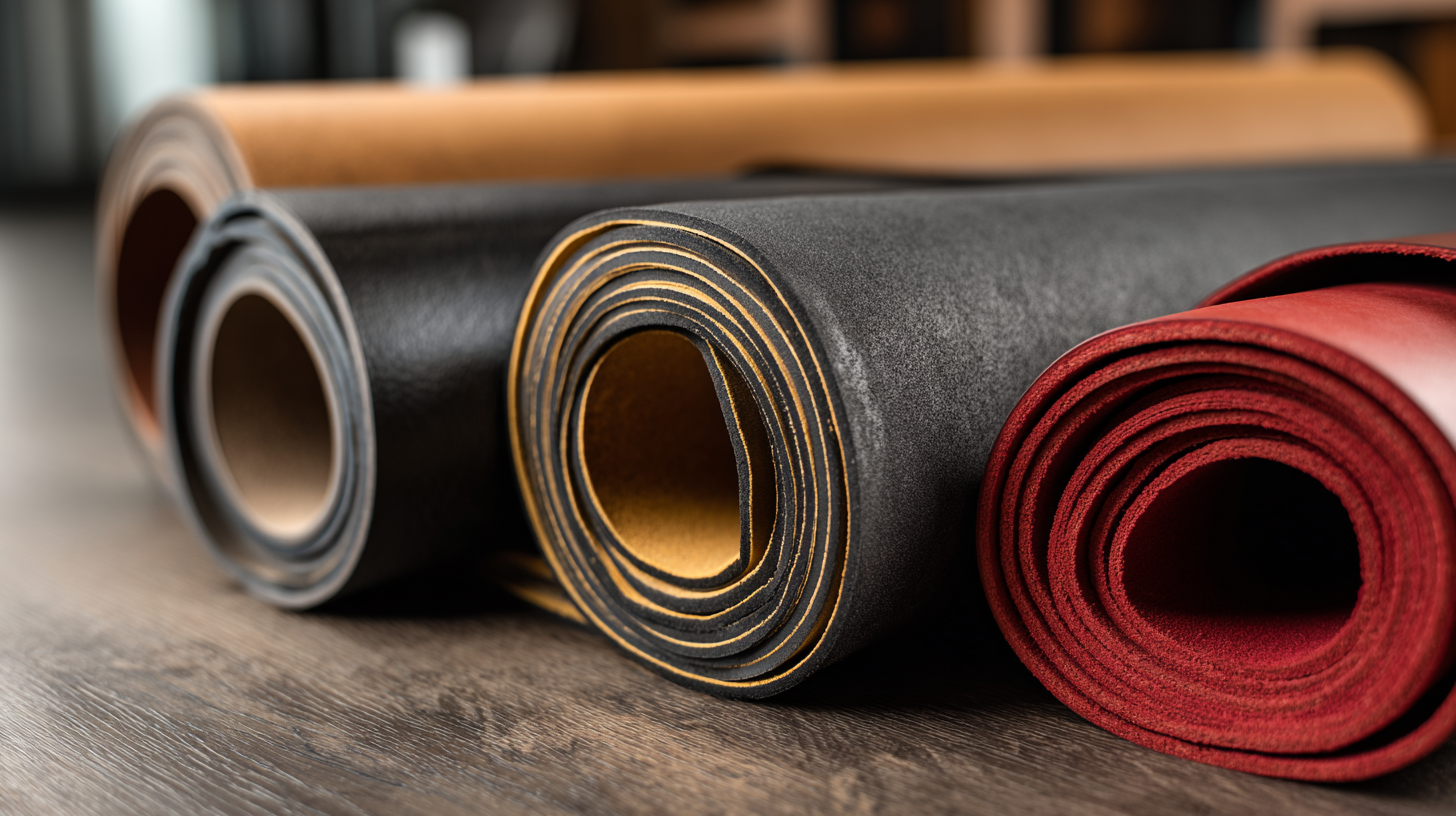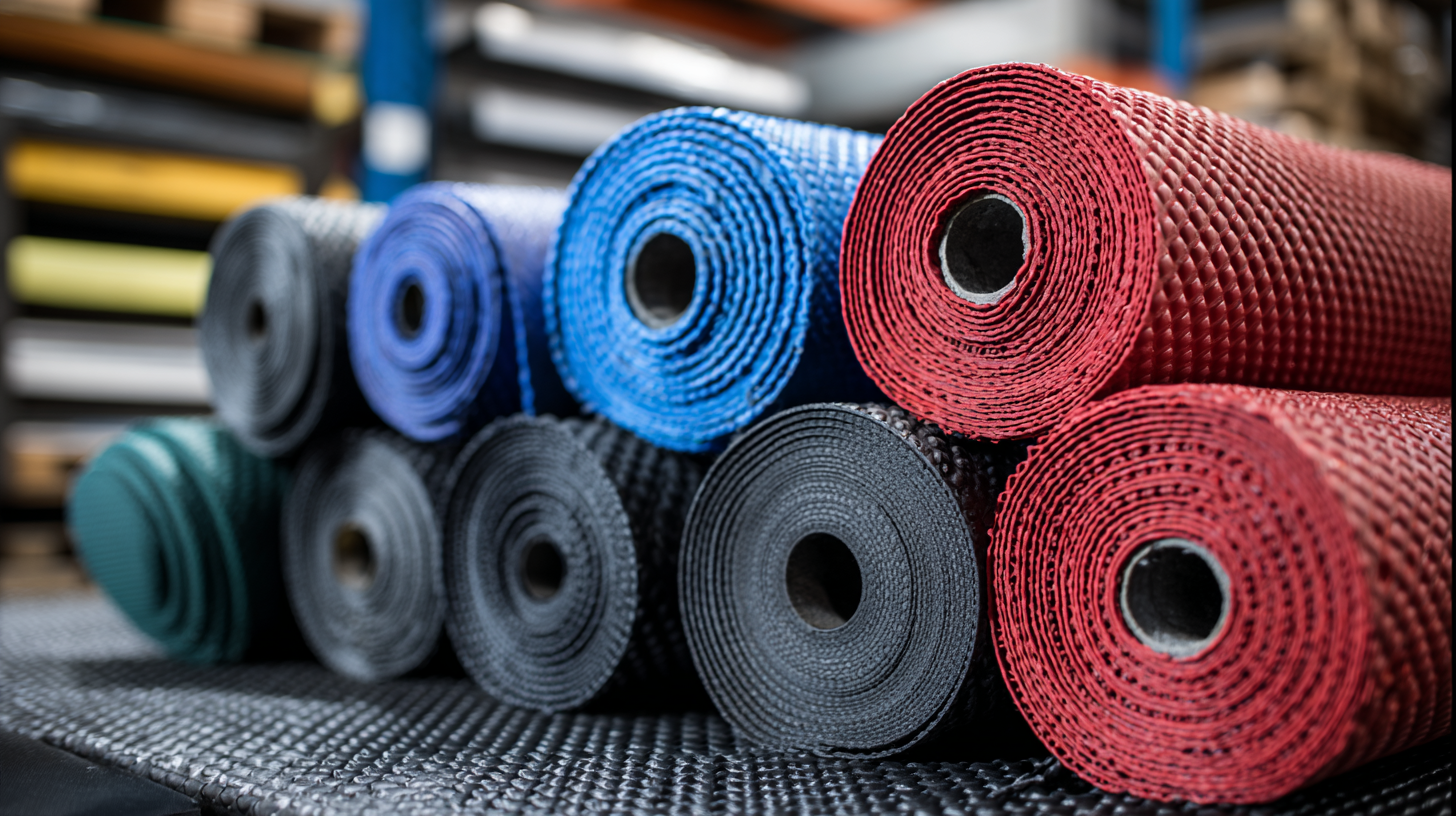Innovative Uses of Best Rubber Mats in Diverse Industries Across the Globe
In the rapidly evolving landscape of global industries, the demand for high-quality rubber mats has surged, driven by their versatility and essential role in various applications. According to a recent industry report by Market Research Future, the global rubber mat market is expected to grow at a CAGR of 5.2% by 2025, reflecting the increasing utilization of these mats in sectors such as construction, automotive, and food services. With such a significant market presence, selecting the right manufacturer becomes crucial for businesses seeking durability and performance. This blog will explore innovative uses of rubber mats across diverse industries and provide a comparison of top manufacturers, highlighting their unique offerings and strengths. By understanding the best practices in sourcing rubber mats, companies can enhance safety, efficiency, and overall operational effectiveness, capitalizing on the benefits these products bring to their specific applications.

Creative Applications of Rubber Mats in the Automotive Industry
In the automotive industry, rubber mats have transcended their traditional role, becoming integral to enhancing vehicle safety, comfort, and aesthetics. According to a report by MarketsandMarkets, the global automotive rubber parts market is projected to reach USD 32.4 billion by 2025, underscoring the growing demand for high-performance materials. Rubber mats, often designed with custom patterns and textures, provide superior grip and durability, essential for driver and passenger safety.
Innovative applications extend beyond mere functionality. For instance, many manufacturers are incorporating sound insulation properties into rubber floor mats, which can significantly reduce cabin noise, improving the overall driving experience. A recent study indicated that vehicles equipped with high-quality rubber mats experienced a 20% reduction in ambient noise, a feature particularly valued in luxury cars.
**Tips:** When selecting rubber mats for your vehicle, consider choosing products that are specifically designed for your car’s make and model for a perfect fit. Additionally, look for mats with antimicrobial properties to maintain cleanliness and hygiene, particularly in high-use vehicles. Regular maintenance, such as cleaning and inspecting for wear, can extend the lifespan of your rubber mats significantly.
Innovative Uses of Best Rubber Mats in the Automotive Industry
This chart illustrates the diverse applications of rubber mats in the automotive industry, showcasing the percentage usage in various areas such as sound insulation, floor protection, anti-slip surfaces, and vibration dampening.
Enhancing Workplace Safety with Rubber Mats in Construction
In the construction industry, safety is paramount. According to the U.S. Bureau of Labor Statistics, falls accounted for over 33% of all construction-related fatalities in 2022. One effective solution to enhance safety on job sites is the use of rubber mats. These mats not only provide cushioning against slips and falls but also contribute to reducing workplace injuries, resulting in lower insurance costs and improving overall productivity.
 Rubber mats are designed to withstand harsh conditions, making them ideal for construction environments. Reports from the National Safety Council indicate that workplaces implementing non-slip flooring solutions, such as heavy-duty rubber mats, have seen a 25% decrease in slip-and-fall incidents. Moreover, these mats are often manufactured with drainage capabilities, effectively managing water and other liquids that can create hazards. By incorporating high-quality rubber mats into their safety protocols, construction companies can foster a safer workplace atmosphere, ensuring that employees are protected while they work.
Rubber mats are designed to withstand harsh conditions, making them ideal for construction environments. Reports from the National Safety Council indicate that workplaces implementing non-slip flooring solutions, such as heavy-duty rubber mats, have seen a 25% decrease in slip-and-fall incidents. Moreover, these mats are often manufactured with drainage capabilities, effectively managing water and other liquids that can create hazards. By incorporating high-quality rubber mats into their safety protocols, construction companies can foster a safer workplace atmosphere, ensuring that employees are protected while they work.
Sustainable Practices: Eco-Friendly Rubber Mats in Agriculture
The agricultural sector has increasingly recognized the role of sustainable practices in enhancing productivity while minimizing environmental impact. One innovative solution gaining traction is the use of eco-friendly rubber mats, which provide numerous benefits. According to a report by MarketsandMarkets, the global rubber mat market is projected to reach $1.5 billion by 2025, with sustainable materials accounting for a significant portion of this growth. These mats not only improve animal welfare by offering non-slip surfaces in barns and stables but also help in water conservation by reducing soil erosion.
Furthermore, eco-friendly rubber mats can also be utilized in crop production. Research indicates that these mats can effectively reduce weeds and improve soil temperature regulation, leading to enhanced crop yields. A study published by the Journal of Agricultural Engineering revealed that using rubber mats in organic farming can reduce pesticide usage by up to 30%, promoting a healthier ecosystem. As the demand for sustainable agriculture rises, the adoption of innovative solutions like rubber mats is expected to become a standard practice, benefiting both farmers and the environment.
Innovative Rubber Mat Designs for Sports and Recreation Facilities
Rubber mats have revolutionized sports and recreation facilities, providing a combination of safety, comfort, and functionality. These mats come in various designs tailored to meet the specific needs of different sports, whether it's for gym flooring, playground surfaces, or even aquatic facilities. Innovative features, such as interlocking tiles and textured surfaces, enhance both performance and safety, allowing athletes of all levels to train and play with confidence.
When choosing rubber mats for a facility, consider the following tips: first, assess the specific activities being hosted and select mats that offer appropriate impact absorption. Additionally, prioritize mats that are easy to clean and maintain, as hygiene is crucial in high-traffic areas. Lastly, explore eco-friendly options, as many manufacturers now offer sustainable rubber mats made from recycled materials, ensuring that your facility not only meets safety standards but also contributes to environmental well-being.
By integrating innovative rubber mat designs into sports and recreational spaces, facility owners can enhance user experience and encourage greater participation in physical activities. From unique colors and patterns to varying thicknesses catering to distinct needs, the options are abundant, allowing for a customized approach to create inviting and safe environments for all.

Customizing Rubber Mats for Specific Needs in Healthcare Settings
In the healthcare sector, the significance of customized rubber mats is increasingly recognized due to their unique advantages in enhancing safety and hygiene. According to a report by the International Journal of Health Sciences, over 80% of hospital-acquired infections can be linked to contaminated surfaces. Customized rubber mats, designed specifically for healthcare settings, can mitigate these risks by utilizing antimicrobial materials that inhibit the growth of pathogens. Hospitals are now integrating these mats in high-traffic areas such as wards, operating rooms, and waiting areas, which not only provide a non-slip surface but also promote cleanliness.
Moreover, the ergonomic properties of these rubber mats contribute to the well-being of healthcare workers. A study conducted by the Occupational Safety and Health Administration (OSHA) highlighted that over 60% of healthcare professionals experience work-related musculoskeletal disorders due to prolonged standing. By incorporating customized rubber mats in workspaces, institutions can significantly reduce physical strain and improve overall job satisfaction. The adaptability of rubber mats to specific environments ensures that facilities can meet the diverse needs of patients and staff alike, proving their invaluable role in modern healthcare infrastructure.
